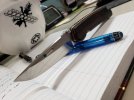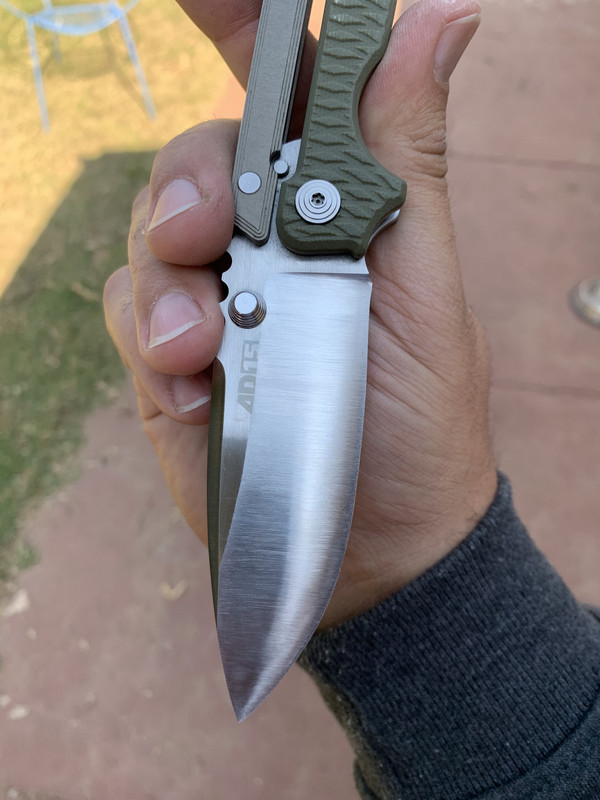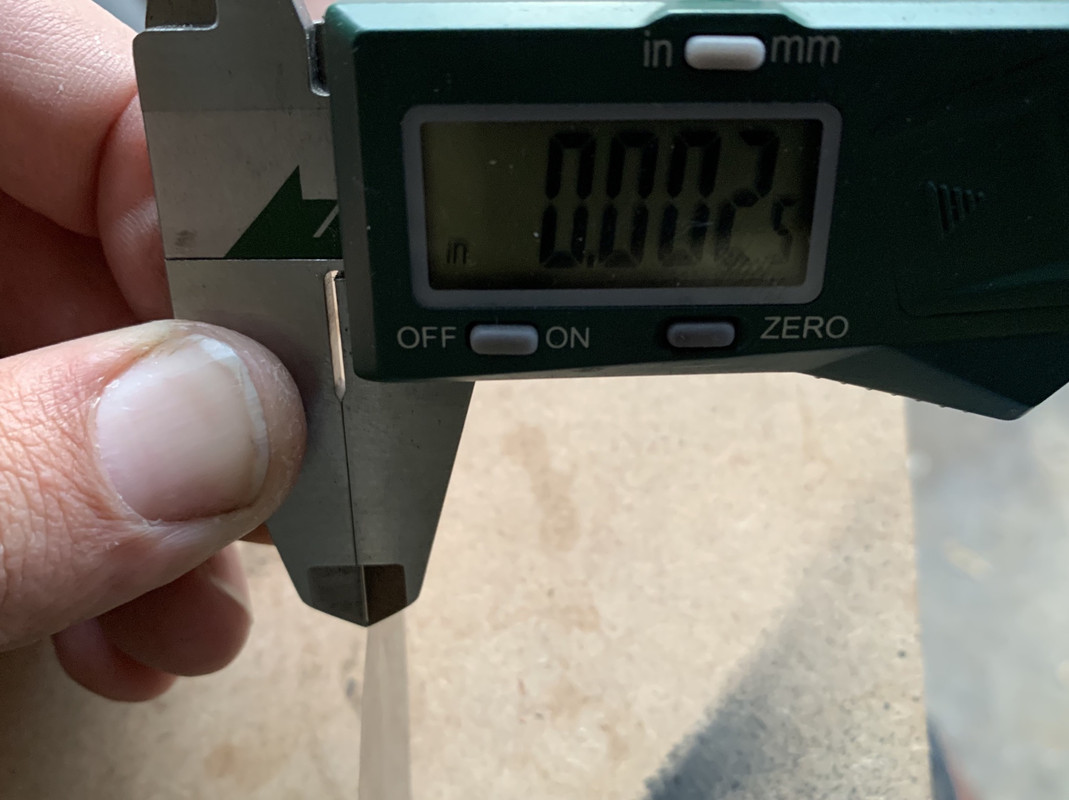sharp_edge
Gold Member
- Joined
- Jul 30, 2015
- Messages
- 5,940
I understand if a knife is too thin BTE, the edge can be chipped when too much lateral force is applied. But I feel many folding knives currently in the market are too thick BTE, e.g., most ZTs and regular Hinderer XM-18s. I think they all can be thinner BTE while still maintaining reasonable strength. For example, the gen 3 Hinderer Eklipse Bowie that I recently picked up is an exception. The blade still has the same thickness on the spine as the regular XM-18 but the BTE thickness is about the same as that of XM-18 3.5" Skinny Slicer.
Do many people really like a thick edge on a folding knife (again I am not talking about thick spine) or is it mainly because knife manufacturers want to reduce their warranty work?
Edit: added some drawings to show while the spine thickness and blade height do not change, there could be quite different grinds of the blade and hence different slicing/cutting performance.

Do many people really like a thick edge on a folding knife (again I am not talking about thick spine) or is it mainly because knife manufacturers want to reduce their warranty work?
Edit: added some drawings to show while the spine thickness and blade height do not change, there could be quite different grinds of the blade and hence different slicing/cutting performance.

Last edited:






